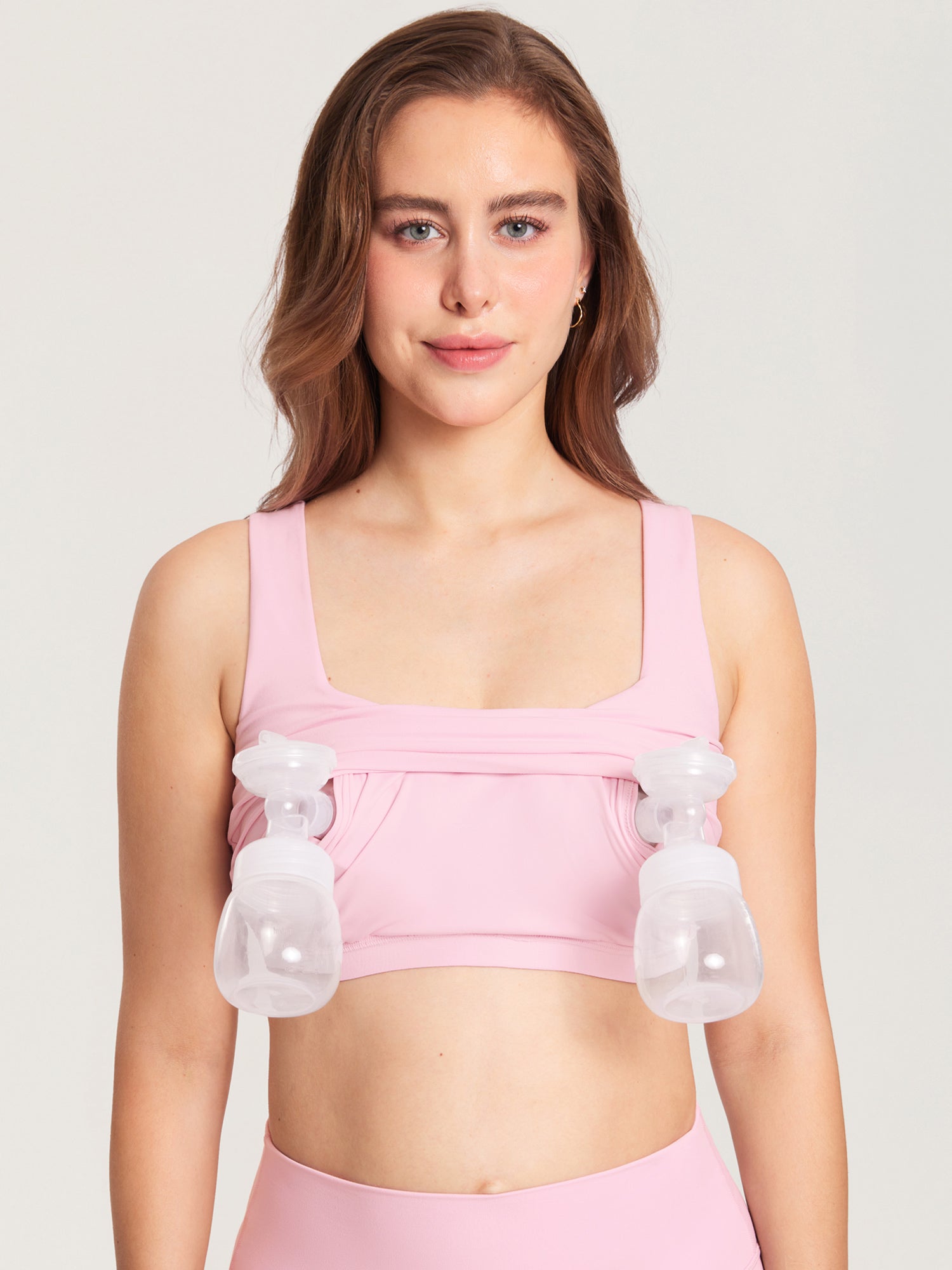How new moms can boost their milk supply

For many expectant moms, how high or low their milk supply will be is something that is constantly on their minds. And over the first few weeks after delivery, they’ll do everything they can to achieve breastfeeding success.
The first four to six weeks after birth are a learning process for both you and your little one. You’ll spend them getting used to each other and laying the foundations of a mother-child relationship that will last your whole lives. Among the things you’ll both need to get the hang of is how to breastfeed. Your little one will need to figure out how to latch and how to suckle while you learn the best positions, most comfortable routine, and how to establish a healthy and robust milk supply.
Speaking of milk supply, one of the main issues a lot of new moms deal with is low milk supply in those early months. If this is what you are going through, is there anything you can do to boost your milk supply?
The golden rule of breast milk supply
If there is just one thing you take away from this guide, let it be this: the higher the demand for your milk, the more your supply will be. This is the golden rule of breast milk supply.
Over 9 months, your body has learnt to anticipate and cater to your little one’s needs. This does not change after delivery. Instinctively, your body knows that your little one needs nurturing, so works to produce enough milk with the right nutritional content to meet that need.
So what does this mean? Well, for nursing moms, the more the baby feeds, the more breastmilk will be produced. Which means if you feed your baby more often, you’ll end up producing more breastmilk over time. You can also trick your body into making even more breastmilk by pumping more.
Here are some more tips for boosting your breast milk supply:
1. Breastfeed your baby often
Pregnancy and delivery bring with them lots of changes to your body. One of the areas that go through lots of changes is the breasts. Over the nine months of your pregnancy and up to 6 months after delivery, your bra size will change drastically because of this.
As your breasts start to produce milk, they will become bigger and heavier. A good nursing bra will help provide the extra support you need when these changes happen, providing some much-needed comfort. At the same time, good nursing bras also help make the task of breastfeeding more convenient for you. This means no more fumbling and struggling every time your little one needs to feed!
2. Pump frequently between feeds
Pumping using a breast pump between feeds can also help increase milk production. When you express milk by pumping, it triggers more milk production, boosting your supply. This is why experts recommend pumping in a wide variety of situations, such as:
- When there is a missed feeding session
- When there is leftover milk in the breast after feeding
- When the mother is not around the child, for example, working mothers in their workplaces
- When the breasts feel full or are leaking
Emptying the breasts frequently is key if you want to increase your breastmilk supply.
That said, if not done right, pumping can be an uncomfortable affair. Consider warming your breasts by placing a warm, wet cloth on them before pumping to open up your milk glands and make pumping easier and more comfortable. Also, consider investing in a good quality pumping bra to free up your hands as you pump. A pumping bra is also essential if you are going to be pumping in places like the workplace.
3. Latching the baby properly
One of the reasons why your baby may not be feeding properly is improper latching. And when they do not feed well, they will not exhaust all the milk in your breasts. As a result, your body will think it is producing too much milk and it will react by slowing down the production process. This will result in poor milk supply.
This is why it is so important for new moms to ensure that their little ones latch properly. So waht does a proper latch look like?
Well, to latch your little one properly, aim their lower lip away from the base of your nipple. Ensure that your baby’s lips are turned outward almost like a fish. They should also lead into the breast chin first instead of upper lip first. When they latch onto your breast, their tongue should be extendend, allowing your nipple to fill your baby’s mouth.
With proper latching, you get complete draining of the breasts, stimulating more milk production.
If you are unsure whether or not your little one is latching correctly, consult your doctor or lactation consultant.
4. Breast stimulation
Experts recommend that over the first few days of nursing, you should hand-express instead of using a breast pump. This is because hand expression is usually more comfortable especially in those early stages when your breasts and nipples are extra sensitive. It is also cheaper, easy to learn and figure out, and, above all else, it stimulates the breasts leading to a boosted milk supply.
As you hand express, consider also incorporating some gentle nipple stimulation between feedings or just before your baby nurses. To do this, all you have to do is gently roll your nipple between your thumb and finger for a few minutes. You can also achieve the same results by touching your nipple with a cold, damp cloth. Nipple stimulation has been shown to be extremely helpful especially for women who are having trouble with the let down reflex that releases the milk into the nipple.
When you stimulate your breasts through hand-expression and nipple stimulation, you signal your body to release the prolactin hormone and produce more milk. Over time, you will notice a significant increase in your breast milk supply.
5. Breastfeed from both breasts at each feeding
It is not uncommon for new moms to experience a higher breast milk supply on one breast than the other. An easy workaround for this is to simply breastfeed from each breast at each feeding.
You can do this by feeding the baby from one breast until they stop then offering the other breast. This kind of stimulation will increase the milk supply and production equally on both breasts.
If you are pumping, consider simultaneously pumping from both breasts at the same time. You can do this with a nursing bra that’s been designed for hands-free pumping. When both breasts are drained and filled at the same rate, your breast milk will have increased fat content and your overall milk production will increase.
6. Lactation cookies
Lactation cookies are yet another method you can use to boost your milk supply. While there has been no definite studies or research to show how lactation cookies can work to boost your supply or by how much they increase your milk supply, there is some anecdotal evidence from women who have usede them. A lot of these breastfeeding moms swear by lactation cookies and have reported noticing an increase in their volume after eating them.
That said, many of the common ingredients in lactation cookies such as barley, flaxseed, wheat germ, and whole oats have been linked to breast milk production. Some lactation cookies also contain natural galactagogues, which are herbs and foods that promote milk production.
You can make lactation cookies at home using online recipes or buy them from the store.
7. Make healthy lifestyle changes
Your lifestyle can also affect your breast milk supply. Some activities that you do every day can have an adverse effect on the production of milk. For example, smoking, drinking alcohol, too much stress, using birth control pills, fatigue, or even wearing the wrong size bra can all lead to reduced milk supply.
Because of this, making simple changes in your daily routine can lead to a natural increase your breast milk supply. Avoid things like alcohol and smoking and try to relax and destress.
Do not be afraid to ask for help when you need it during this time. Stress and exhaustion are some of the main factors that negatively affect your milk supply. That’s why experts recommend getting as much rest as you need. When you are less stressed and well rested, more energy will be put into milk production.
8. Drink plenty of fluids and eat well
Breast milk is 90% water. This means every time you breastfeed, your little one is literally draining your body of fluids. You should therefore drink plenty of fluids throughout the day. Experts recommend that nursing mothers should consume an equivalent of 6-8 glasses of water a day.
At the same time, milk production also requires energy in the form of calories. The best way to achieve this is by eating good, healthy, balanced foods. Consume protein-rich foods like poultry, meat, fish, diary, eggs, beans, nuts, and seeds at least 2-3 times every day. Add 2-3 servings of green and yellow veggies to your daily diet as well. Finally, eat two serings of fruit per day. Also, consider including whole grains like whole wheat, pasta, oatmeal, and cereal to your daily diet.
As a plus, a healthy diet will also ensure that your little one gets all the nutrients they need for their optimal growth and development!
Final Thoughts
When you have low milk supply, you may have a hard time meeting your little one’s normal dietary needs. Because of this, there is a risk of them not developing normally due to certain nutritional deficiencies.
The good news is that in most cases, low milk supply is a temporary issue that usually improves on its own. There are also some interventions that you can implement to give yourself a boost in your production. With the tips outlined here, managing, boosting, and supporting your little one’s breastfeeding should be a breeze. If you have any further doubts or concerns, please consult your lactation consultant or your doctor.
Angelia Smith - Feb. 13 2022
5 Best and Worst Foods for Breast Milk Supply
Mar 17, 2025 SamanthaHoare
Foods for Breastfeeding Mothers to Help Prevent Colic
Mar 17, 2025 SamanthaHoare
4 Signs of Poor Attachment in Breastfeeding
Mar 12, 2025 SamanthaHoare
Is It Hard to Breastfeed After Breast Reduction
Feb 04, 2025 SamanthaHoare
How Can Busy Moms Successfully Pump While Traveling
Feb 04, 2025 SamanthaHoare
How Long Is Heated Breast Milk Good For
Feb 04, 2025 SamanthaHoare
SUBCRIBE FOR NEWSLETTER
Shop today with 10% OFF your first order of all products storewide
























